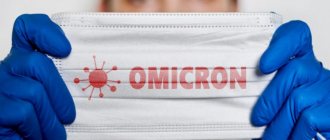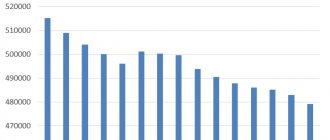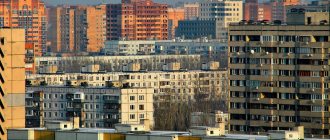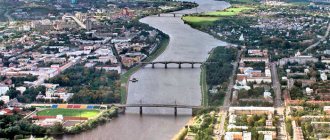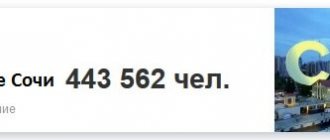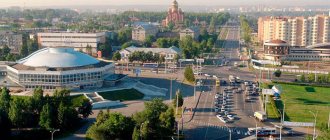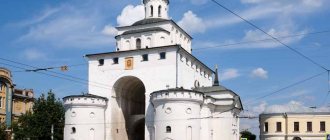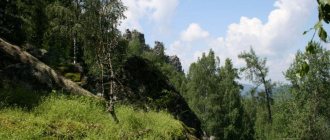How many people live in the city of Ivanovo? What is the population as of January 1, 2022?
Statistics have always interested people and no matter what it concerns, and we are interested in it for a variety of reasons, out of curiosity and for other, very different reasons, we want to know about something, for example, about a given topic, which we will deal with below.
Data by year
In 1871, when Ivanovo-Voznesenk received city status, 20,000 people lived in it. It grew quite quickly and in 1897 the number of residents was already 54,200, in 1914 - 146,000, and in 1917 - 174,400. The Civil War led to a sharp reduction in the number of city residents. In 1923 it was only 71,800 people. Pre-revolutionary indicators were achieved and surpassed only in the late 20s and early 30s. In 1931, statistics showed that 177,200 people lived in Ivanovo.
The policy of industrialization gave a new powerful impetus to the growth of the Ivanovo population. In 1939, its population was 285,182 people. Subsequently, this figure grew steadily. In 1956 it was 319,000, 1979 - 464,526, 1991 - 48,200.
The structural crisis of the 90s, associated with the destruction of the economy and social sphere of our country, led to a sharp deterioration in demographics in the city of Ivanovo. In dynamics, information about the number of its inhabitants looks like this:
- 1992 - 480,000 people.
- 1998 — 464000.
- 2001 — 452100.
- 2009 — 404539.
Then there was some stabilization. In 2011, the number of residents in the regional center was 409,300. But this did not lead to a radical improvement in the situation and further demographic decline continued. According to current information, the number of residents as of 2016 was 408,025, and in 2022 it is already 404,598. According to this parameter, the Ivanovo urban district ranks 49th in the Russian Federation.
Population gain or loss according to the census
The total and official population of the city of Ivanovo, how many people live in it as of January 1, 2022, the number of people in each individual urban district and municipality, further in the second table.
| Year | Growth/decrease population city of Ivanovo |
| 2017 | ↘406,933 people |
| 2018 | ↘406 113 people |
| 2019 | ↘405,053 people |
| 2020 | ↘404,598 people |
| 2021 | ↘401,505 people |
| 2022 |
About the city
At the beginning of its history, Ivanovo was a settlement. This is how unfortified rural settlements are designated in archeology. The first written mention of the village dates back to 1608. During the Time of Troubles, it was captured by Polish invaders and was severely devastated. But it was restored quite quickly. Due to low soil fertility, farming was not a profitable activity here, and soon crafts, including textiles, became the main occupation of local residents.
At the end of the 17th century, the village was a famous center of Russian weaving. In the middle of the 18th century, the first manufactories appeared here. This is what science calls industrial enterprises with manual labor, but in which there is already specialization between workers. They were founded by capitalist peasants (entrepreneurs who came from the peasant class).
In 1853, Voznesensky Posad appeared nearby. In 1871 it merged with the village of Ivanovo, as a result of which the city of Ivanovo-Voznesensk arose, which immediately became one of the main centers of the textile industry of the Russian Empire. In 1932 the city received its modern name.
During Soviet times, the city remained the largest center of domestic and global textile production. At the same time, a number of large mechanical engineering plants were built. By the way, it was largely thanks to textile production that Ivanovo received its nickname “the city of brides.” After all, weaving work was traditionally female work and many young girls worked in Ivanovo factories.
What is the population of the city of Ivanovo?
| Ivanovo region | 987 032 | 807 364 | 179 668 |
| Ivanovo urban district | 401 505 | 401 505 | 0 |
| Ivanovo | 401 505 | 401 505 | 0 |
| including inner city areas: | |||
| Leninsky district | 147 232 | 147 232 | 0 |
| Oktyabrsky district | 84 784 | 84 784 | 0 |
| Sovetsky district | 57 549 | 57 549 | 0 |
| Frunze district | 111 940 | 111 940 | 0 |
With the population of the city of Ivanovo as of January 1, 2022, how many people live in this territory, people in municipalities and this locality, this territorial unit of the Russian Federation, that’s what we figured out here, we made our contribution to satisfying the requests of those interested in this statistical information .
Unfavorable days in 2022, difficult for health and well-being
Lunar calendar for hair cutting 2022, favorable days to cut hair
Gender and age
The gender and age structure fully justifies the nickname “city of brides.” Characterized by a significant predominance of the female population over the male population. According to the same census, there were 228,758 representatives of the fair sex in the urban district in 2010, and 179,572 men.
This trend is fully consistent with the indicators characterizing the population of the Ivanovo region as a whole. According to data for 2022, the number of women in the region per 1000 men is 1217.
The age structure of the population of the urban district is as follows. As of 2010, there were 56,128 children aged 0 to 15 years. The number of people of working age was 266,873, and pensioners over the age of 60 were 85,329.
IVANOVO
IVANOVO, city in Russia, adm. the center of the Ivanovo region, forms an urban district. Us. 404.6 thousand people (2019; 408.3 thousand people in 2010; 431.7 thousand people in 2002; 481.0 thousand people in 1989; 335.2 thousand people in 1959). Located in the center. parts of the region, on the river Take it away. Railway station. Road junction. Ivanovo-Yuzhny Airport (1939; passenger traffic 38.3 thousand people in 2019).
Story
The most ancient archaeological data on the settlement at the site. Ivanovo dates back to the 14th–15th centuries. First mentioned in sources in February. 1609, when during the Polish-Lithuanian Commonwealth intervention of the early 17th century. it was captured by A.I. Lisovsky’s detachment. In the 17th century it was owned by the princes Shuisky and Cherkasy. K con. 17th century the village became a large craft center, where Ch. The occupations of the population were textile crafts, dressing of linen canvases, their dyeing and printing. In the beginning. 18th century With. Ivanovo came into the possession of the Sheremetevs. In 1708–78 it was part of the Shuisky district of the Moscow province. In 1742, the serf peasant G. Butrimov opened here one of the first in Russia. Empires of manufactories that produced linen fabrics, later manufactories were founded by peasants I. I. Grachev (1748–1749), I. M. Yamanovsky (1751), I. M. Garelin (1751).
In 1778–1918 as part of the Vladimir province (in 1778–96 – Vladimir governorship). From the end 18th century Every year in September the Exaltation of the Cross Fair was held, textile products were also traded at all-Russian fairs.
In the 1st third of the 19th century. in the village Cotton production appeared in Ivanovo, mainly. the raw material for which was Amer. cotton. In 1826, the first machine for printing calico was installed at the enterprise of D. Spiridonov, then machines and steam engines appeared in weaving and spinning establishments. In the 1820s–40s. near the village Ilyinskaya, Dmitrovskaya, Voznesenskaya and Troitskaya settlements arose in Ivanovo, where “capitalist” peasants who had bought their freedom settled. In 1853, the settlements united into Voznesensky Posad, in 1859 there were 34 textile enterprises in it, including N. and P. Derbenevs, D. A. Burylin. K ser. 19th century With. Ivanovo became one of the most important centers of growth. textile production, for which it received the nickname “Russian Manchester”. In 1868, the lines Novki - Ivanovo (1868), Ivanovo - Kineshma (1871), Ivanovo - Teykovo (1896) of the Shuisko-Ivanovo railway passed through it. d. 21.7(2.8).1871 by decree of the Emperor. Alexander II c. Ivanovo and Voznesensky Posad are united into the city of Ivanovo-Voznesensk. In 1900 there were 59, ch. arr. textile enterprises (26.7 thousand workers, or about 50% of the city’s population). The largest factories belonged to the Garelins, Burylins, Zubkovs, Derbenevs, Polushins, Gandurins, and Vitovs. In the beginning. 20th century the city's factories produced approx. 10–11% of cotton fabrics produced in Russia. empires. The range of fabrics was made with a view to the general consumer; the most popular designs were “mil-flor” (small floral) and “oriental cucumber”; the design of the fabrics reflected the traditions of the people. applied science. In 1913, the largest companies in Ivanovo-Voznesensk were the Kuvaevskaya Calico Printing Manufactory [founded in 1887 by N. G. Burylin; owned a cotton-printing factory (founded in 1817 by Ya. E. Kuvaev; now “Bolshaya Ivanovo Manufactory”)], I. N. Garelin and his sons manufactory enterprise [1883; owned paper weaving, bleaching, and calico printing factories (1855; now the ZiMa finishing factory)].
During the Revolution of 1905–07, the city became the center of the so-called. The Ivanovo-Voznesensk strike, which also covered nearby cities - Shuya, Vichuga, Teykovo, Kineshma, etc. At the same time, the first citywide Council of Workers' Deputies in Russia was created in Ivanovo-Voznesensk. In Aug. In 1915, an anti-war strike took place in the city, during which a peaceful march of workers was shot, killing 30 people. In Oct. In 1917, factory workers in Ivanovo-Voznesensk took part in a strike, which also covered textile enterprises in Kineshma, Shuya, Rodniki, etc. As a result, power in the city passed on October 25 (November 7), 1917 to the Council of Workers' and Soldiers' Deputies. Center of the Ivanovo-Voznesensk province (1918–1929), Ivanovo Industrial Region (1929–36), Ivanovo region (since 1936).
In con. 1920s - early 1930s The city's industry was being restored, weaving factories were renovated and relaunched, including N. Vitov's factory (founded in 1863; now the Krasnaya Talka finishing factory). In 1925, the country's first kitchen factory, Narpit, was opened. 12/27/1932 Ivanovo-Voznesensk was renamed I. In the years of Great. Otech. During the war, I. enterprises produced fabrics for uniforms, cotton wool and gauze. On the territory of the Ivanovo airfield, the formation of the Normandy-Neman air regiment took place. In the post-war years, the situation that had emerged in the beginning intensified. 20th century characteristic of India is the problem of disproportion between the male and female population (the latter prevailed due to the significant share of women’s employment in textile enterprises). To resolve it in the 1950s. A number of enterprises focused on the use of male labor were built in India (a truck crane factory, etc.). Since 2004 it forms a city district. City of Labor Valor (2020).
Architecture
Ivanovo. Ivselbank building. 1924–25. Architect V. A. Vesnin. Photo by P. S. Pavlinov
Photo by A.I. Nagaev Ivanovo. "Horseshoe House." 1934. Architect A. I. Panov.
In 1579 in the village. Pokrovsky Monastery was built in Ivanovo. (demolished in the 1930s) with Podmonastyrskaya Slobodka [extant: wooden. Uspenskaya c. (late 17th – early 18th centuries), now moved to another place in the city; brick official hut - so-called. Shchudrovskaya tent (late 17th century)]. K con. 18th century A rectangular network of streets was formed, and large merchant houses appeared. estates (E. I. Gracheva, O. I. Shchudrova). Housing development in the main was wooden, some manufactured. buildings (manufactures and slaughterhouses) were built of brick. In the 1st half. 19th century in the settlements near the village. Ivanovo was built: on the right bank - the churches of Elijah the Prophet (1838–42), the Assumption and the Annunciation (demolished in the early 1970s; both 2nd quarter of the 19th century); on the left is the Church of the Ascension (1851, according to the exemplary design of K. A. Ton; destroyed at the turn of the 1920s–30s), the buildings of the Mountains. Duma and Gostiny Dvor. Ch. streets of Ivanovo and Voznesensky Posad converged at the bridge over the river. Uvod and after the merger of the village with the settlement in 1871 became the basis of a single mountain. street network. Large complexes of textile enterprises were located along the river. Take it away. In the 2nd half. 19th century many merchant houses were built. houses with a first brick floor, where shops and shops were located, and a second wooden floor - residential. In the beginning. 20th century merchant-manufacturers ordered projects from leading Moscow. architect (I. E. Bondarenko - passage of the company "I. A. Sokolov with his sons", 1910s; P. A. Trubnikov - complex of the Neburchilovskaya hospital, 1912–14; Building of the Museum of Industry and Art named after D. G. Burylina, 1915; F. O. Shekhtelya - Church of the All-Merciful Savior, 1898–1903, demolished in the 1930s). The local version of modernism and neoclassicism is represented by the work of a native of I. - architect. A. F. Snurilov (mansion of A. D. Duringer, 1909; shopping arcades of N. I. and V. I. Kurazhevs, 1912–14), Russian style - buildings by architect. P. G. Begen (house of N. M. Gandurin, 1898; ensemble of the Introduction Center, 1900–09). In the 1920s–30s. Urban planners A.P. Ivanitsky and L.A. Ilyin worked on the development of the planning structure of Ilya, and a number of Moscow projects were implemented. architects [complex of the First Workers' Village, architect. L. A. Vesnin (see article Vesnin) and others; Ivselbank building, architect. V. A. Vesnin; “House-ship”, architect. D. F. Friedman; “Collective House” in the First Workers' Village, arch. I. A. Golosov (see article Golosov); complex of Ivanovo Polytechnic institute, arch. I. A. Fomin]. Local architects created: a school with an observatory tower (1928, architect V.I. Pankov), a “Horseshoe House” in the forms of late constructivism (1934, architect A.I. Panov), etc. Among the architects. monuments - the grandiose Drama Theater (now the Palace of Arts; in the 1930s, architect A. V. Vlasov; reconstructed in 1965–87). In the 1950s in the style of owls neoclassicism erected by Ch. regional agricultural pavilion exhibitions, Med building. institute (both – architect N.I. Kadnikov). Monuments: Fighters of the Revolution (1975, sculptors D. B. Ryabichev, M. I. Malyutin, architect E. I. Kutyrev), memorial “Red Talka” (1975, sculptor L. L. Mikhailyonok, architect P. S. Vasilkovsky), O. V. Varentsova (1980s, sculptor M. K. Anikushin, architects F. A. Gepner, E. K. Kasatkin), etc.
Near I., in the village. Novotalitsy, - a complex of Nikolskaya and Varvarinskaya churches (1755; 1855) and the House-Museum of the Tsvetaev family (opened in 1995). In the center of the village. Mikhalevo – c. John the Evangelist (1829; bell tower, 1848), from which the streets diverge crosswise. In the village Bogorodskoye - the remains of the estate of P. N. Krechetnikov (late 18th - 1st third of the 19th centuries) with the Assumption Church. (1796) in the style of classicism.
Centers of science and culture
Photo by A.I. Nagaev Ivanovo. Museum of Industry and Art named after D. G. Burylin. 1915. Architect P. A. Trubnikov.
Among scientific institutions I. – research institutes with. of the Russian Academy of Agricultural Sciences, Research Institute of Solution Chemistry of the Russian Academy of Sciences, Research Institute of Occupational Safety and Health, Ivanovo Center for Gender Research, Research Institute of Motherhood and Childhood named after. V. N. Gorodkova, Research Institute of Cotton Industry. Universities: Ivanovo State. agricultural Academy named after D.K. Belyaeva (1918; current status since 1995; current name since 2006), Ivanovo State. honey. Academy (1930; current status since 1994), Ivanovo State. University (created in 1973 on the basis of the Pedagogical Institute, founded in 1918), Ivanovo State University. Chemical-Technological University (1930; current status since 1998), Ivanovo State University. Energy University named after. V.I. Lenin (1930; current status since 1992), Ivanovo State. Polytechnic University [(formed in 2012 by combining the University of Architecture and Civil Engineering (1981) and the Textile Academy (1930)], branches of other universities. Ivanovo regional libraries: scientific (1919), for children and youth (1927). Museums: Ivanovo State Historical and Local History Museum named after D. G. Burylin [2007; based on the Ivanovo Association of Historical and Revolutionary Museums (1978) and the Museum of Industry and Art named after D. G. Burylin], regional art museum (1959, opened in 1960 in the building of the former Real school and school of colorists, 1886–98, architects P. V. Troitsky, V. F. Sikorsky), Ivanovo chintz (opened in 1987 in a mansion in the style Art Nouveau, architect A. F. Snurilov), Museum and Exhibition Center (building 1980, architects A. I. Tolstopyatov, V. M. Shakhmatov), house-museums of artists A. I. Morozov and B. I. Prorokov. Theaters : musical (1930), dramatic (1933), puppet (1935), Circus named after V. A. Volzhansky (1933), Ivanovo State Philharmonic, including symphony and chamber orchestras.
Sport
Football club "Textilshchik" (founded in 1937) is a participant in the Football National League championship (in the 2020/21 season). It hosts rivals at the stadium of the same name (opened in 1933; reconstructed in 2008; capable of accommodating over 9.5 thousand people). Other stadiums in the city are Lokomotiv, Spartak, and Burevestnik. In I. there is one of the largest sports and entertainment centers in the country (2008; area - 400 m2). In 1965, matches of the Bandy World Championship took place, and in 1993, the European Women's Wrestling Championship was held.
Farm
The most developed industries in India are mechanical engineering, the chemical industry, the light industry, and the food industry. I. accounts for 58.7% of retail trade turnover in the Ivanovo region (2019). Leading enterprises: Ivanovo Machine-Building Plant (truck-mounted cranes), KRANEKS (tracked hydraulic excavators, quarry buckets, attachments), Ivanovo Heavy Machine Tool Plant (heavy, woodworking, universal machines, machining centers, etc.), Neurosoft ( medical devices: electroencephalographs, electrocardiographs, magnetic stimulators, etc.), “Ivkhimprom” (preparations for the production of chemical fibers, auxiliary substances for the oil and gas industries, paints and varnishes, additives for petroleum products, etc.), “Ivanovoiskozh” ( artificial leather, film materials), "Promfabric" (dyes, pigments, industrial chemicals), PKF "Trinity" (elastan and latex threads), "Trading House Raumprofi" (paint and varnish products). The Ivanovo Pharmaceutical Factory operates (1936; finished medicinal products: tinctures, extracts, solutions, oils, syrups and powders).
Numerous textile enterprises are located in India (the Samoilovsky Textile plant as part of the Nordtex production corporation, the Zima Finishing Factory, the Krasnaya Talka Finishing Plant, Melange-Textiles - technical fabrics and fabrics for workwear, etc. .) and clothing production (including Ivanovo Textile Company - rugs, blankets, pillows, mattresses, knitted and terry products, clothing factories: "Ivanhoe" - men's suits, "Samson" - mattress covers, bed linen, pillows , "Protex" and "Softteks" - home textiles, "Vostok-Tex" - workwear, clothing for fishermen, knitwear; parachute factory "Polyot").
The main food industry enterprises are Ivmolokoprodukt, a branch of AB InBev Efes (beer, soft drinks).
Production of cardboard products (“New paper technologies”), bricks (Ivanovo silicate plant), abrasive materials (Ivanovo building materials and abrasives), metal-plastic windows (“Standart”).
Energy supply is provided by Ivanovo CHPP-2 (200 MW) and Ivanovo CHPP-3 (330 MW; both included).
Migration
Migration flows in the city are very contradictory. On the one hand, as a result of internal migration there is an outflow of population. Moscow is in first place in terms of the number of people leaving, St. Petersburg is in second place.
The balance of external migration is positive. Mainly due to citizens of former Soviet Asian republics. But this fact cannot indicate the attractiveness of life in the region. The overwhelming majority of migrants do not seek to stay here permanently, but, after working for some time, go home.
At the moment, we can confidently state that negative demographic trends in Ivanovo have not yet been overcome. Only a radical improvement in the economic situation in the city can turn the situation around.


